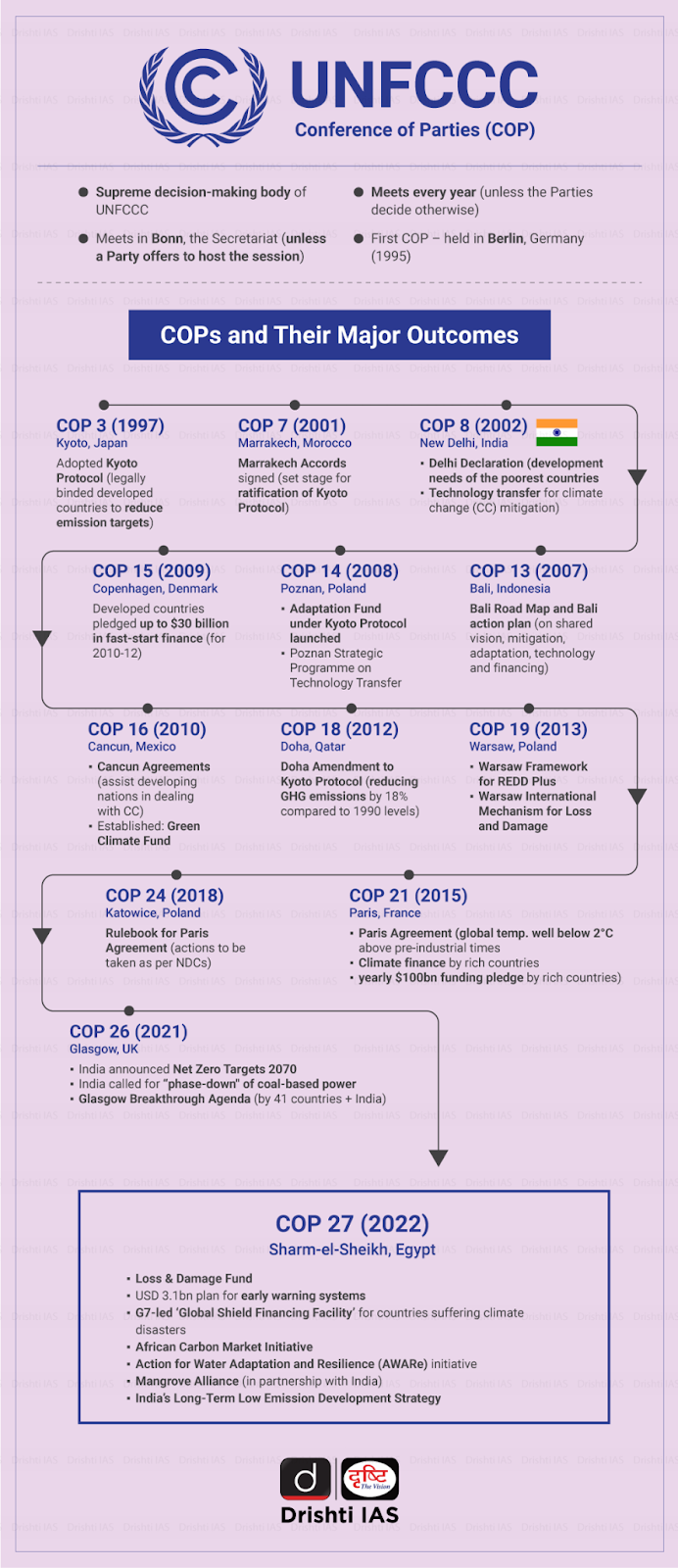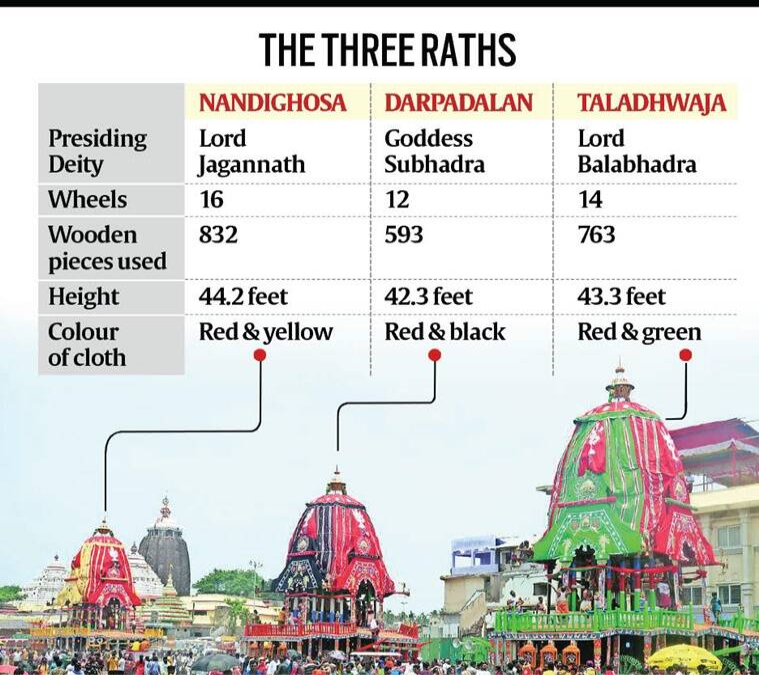Social Justice
Global Trends: Forced Displacement in 2022
For Prelims: United Nations High Commissioner for Refugees, World War II, Internal displacement, Democratic Republic of the Congo, Ukraine, 1951 Refugee Convention, UN General Assembly
For Mains: Drivers of Displacement Around the World, Solutions to Address Forced Displacement.
Why in News?
The year 2022 witnessed a staggering surge in the number of people uprooted from their homes due to social and climate crises, as highlighted in a report by the United Nations High Commissioner for Refugees (UNHCR).
- With an increase of 21% compared to 2021, a total of 108.4 million individuals were forcibly displaced, including a significant number of children.
What are the Major Highlights of the Report?
- About:
- According to UNHCR’s statistics on forced displacement, the number of people who were forced to flee their homes due to persecution, conflict, violence, human rights violations and events seriously disturbing public order reached a record 108.4 million by the end of 2022, and 30% of them were children.
- This represents an increase of 19 million people compared to the end of 2021.
- Of the global total of 108.4 million forcibly displaced people, 35.3 million were refugees, people who crossed an international border to find safety.
- Forced displacement can be internal or external, depending on whether the displaced people remain within their country of origin or cross an international border.
- According to UNHCR’s statistics on forced displacement, the number of people who were forced to flee their homes due to persecution, conflict, violence, human rights violations and events seriously disturbing public order reached a record 108.4 million by the end of 2022, and 30% of them were children.
- Drivers of Displacement:
- The main driver of displacement in 2022 was the full-scale war in Ukraine, which erupted in February 2022 and created the fastest and one of the largest displacement crises since World War II.
- By the end of 2022, a total of 11.6 million Ukrainians remained displaced, including 5.9 million within their country and 5.7 million who fled to neighbouring countries and beyond.
- Other ongoing and new conflicts also contributed to forced displacement across the globe, such as in the Democratic Republic of the Congo (DRC), Ethiopia and Myanmar, where more than 1 million people were displaced within each country.
- The total number of people displaced across the world increased to 110 million by May 2023, driven by the fresh conflict in Sudan
- In addition to conflict and violence, climate change and natural disasters also triggered displacement and exacerbated the vulnerability of displaced populations.
- Climate disasters caused 32.6 million internal displacements throughout 2022 and 8.7 million of the people did not manage to return home by the end of the year.
- Disaster related internal displacement accounted for more than half (54%) of all new displacements in 2022.
- The main driver of displacement in 2022 was the full-scale war in Ukraine, which erupted in February 2022 and created the fastest and one of the largest displacement crises since World War II.
- Displacement Burden on Poorer Countries:
- Low- and middle-income countries bore the greatest burden, with 90% of the displaced population originating from these nations.
- These countries also hosted 76% of the world's refugees in 2022, highlighting their disproportionate responsibility.
- Least Developed Countries (LDCs) hosted 20% of the global refugee population, with nations such as Bangladesh, Chad, the DRC, Ethiopia, Rwanda, South Sudan, Sudan, Uganda, Tanzania, and Yemen facing significant challenges.
- Low- and middle-income countries bore the greatest burden, with 90% of the displaced population originating from these nations.
- Statelessness:
- Statelessness exacerbates the difficulties faced by refugees, denying them access to basic necessities like healthcare, education, and employment.
- An estimated 4.4 million people worldwide were stateless or of undetermined nationality by the end of 2022, a 2% increase from the year 2021.
What are the Impacts of Forced Displacement?
- Impacts on Refugees:
- Economic Hardships: Many refugees lose their livelihoods and economic stability upon displacement. They often face barriers in accessing employment opportunities, education, and financial resources in host countries.
- Economic hardships can result in poverty, limited access to essential goods and services, and increased vulnerability.
- Education Disruption: For refugee children and youth, access to education is often disrupted or entirely denied.
- Limited educational opportunities can hinder their long-term development and prospects for a better future, perpetuating a cycle of poverty and dependency.
- Trauma and Emotional Distress: Refugees often experience traumatic events during their displacement, including violence, loss of loved ones, and the destruction of their homes and communities.
- This can lead to severe emotional distress, including post-traumatic stress disorder (PTSD), anxiety, and depression.
- Physical Health Challenges: Displaced refugees may face numerous health challenges, including inadequate access to healthcare, malnutrition, and exposure to unsanitary conditions.
- Lack of proper sanitation and healthcare facilities can lead to the spread of diseases, further compromising their well-being.
- Social and Cultural Challenges: Refugees often face challenges in integrating into the host society due to language barriers, cultural differences, and discrimination.
- Social exclusion and marginalization can exacerbate their feelings of isolation and hinder their ability to rebuild their lives.
- Economic Hardships: Many refugees lose their livelihoods and economic stability upon displacement. They often face barriers in accessing employment opportunities, education, and financial resources in host countries.
- Impacts on Host Communities:
- Strain on Resources and Services: The sudden influx of refugees can place significant pressure on host communities' resources, including housing, healthcare facilities, schools, and public services.
- The increased demand can overburden existing infrastructure, leading to shortages and reduced access for both refugees and host community members.
- Social Cohesion and Cultural Dynamics: The arrival of refugees may create social tensions and cultural dynamics within host communities.
- Differences in language, religion, and customs can generate misunderstandings and conflicts.
- Increased Competition for Jobs: The presence of refugees can lead to competition for employment opportunities in host communities.
- Some host community members may perceive refugees as taking away jobs or driving down wages, leading to tension and resentment.
- Strain on Resources and Services: The sudden influx of refugees can place significant pressure on host communities' resources, including housing, healthcare facilities, schools, and public services.
What can be the Possible Solutions to Address Forced Displacement?
- Humanitarian Assistance: Providing immediate humanitarian aid such as food, shelter, healthcare, and clean water to displaced populations is crucial.
- International organisations, governments, and NGOs should work together to ensure the basic needs of displaced people are met.
- Conflict Resolution and Peacebuilding: Addressing the root causes of forced displacement requires efforts to resolve conflicts and promote peace.
- Diplomatic negotiations, mediation, and peacebuilding initiatives can help prevent further displacement by resolving the underlying issues.
- Protection of Human Rights: Upholding and protecting the human rights of displaced individuals is essential.
- Governments should enact and enforce laws that protect the rights of displaced people, including their right to safety, dignity, and access to basic services.
- Empowering Local Communities: Strengthening the capacity of host communities to accommodate and support displaced populations can help mitigate tensions and promote social cohesion.
- This can be done through investments in infrastructure, education, healthcare, and livelihood opportunities.
- Regional and International Cooperation: Forced displacement often requires a coordinated response from multiple countries and international organisations.
- Collaboration between governments, regional bodies, and humanitarian agencies is crucial to share responsibilities, resources, and expertise in addressing displacement challenges.
- This includes framing a legislation that recognizes the rights of displaced people, establishes procedures for their protection, and provides avenues for durable solutions such as voluntary return, resettlement, and local integration.
What is the United Nations High Commissioner for Refugees?
- UNHCR, the UN Refugee Agency, is a global organisation dedicated to saving lives, protecting rights and building a better future for people forced to flee their homes because of conflict and persecution.
- It was established by the General Assembly of the United Nations in 1950 in the aftermath of the Second World War to help the millions of people who had lost their homes.
- Currently, UNHCR is governed by the UNGA and the UN Economic and Social Council (ECOSOC).
- It is guided by and acts as the guardian of the 1951 Refugee Convention and its 1967 Protocol.
- India is not a party to the 1951 Refugee Convention and its 1967 Protocol.
UPSC Civil Services Examination Previous Year Question (PYQ)
Mains:
Q. “Refugees should not be turned back to the country where they would face persecution or human right violation”. Examine the statement with reference to ethical dimension being violated by the nation claiming to be democratic with open society. (2021)
Q. Rehabilitation of human settlements is one of the important environmental impacts which always attracts controversy while planning major projects. Discuss the measures suggested for mitigation of this impact while proposing major developmental projects. (2016)


Social Justice
Rape Crimes
For Prelims: Rape Crimes, Section 375 of the IPC, Criminal Law (amendment) Act 2013, POCSO, Supreme Court.
For Mains: Rape Crimes, related Challenges and Way Forward
Why in News?
Recently, Japan has passed a bill that introduces crucial measures to enhance Legal Protections for minors, regarding Rape and Sexual Crimes.
What are the Key Points of the New Measures?
- New Definition of Rape:
- Japan has expanded the definition of rape from "forced sexual intercourse" to "non-consensual sexual intercourse", aiming to encompass a wider range of scenarios where victims may be unable to refuse or express their lack of consent to engage in sexual intercourse.
- Age of Consent:
- Age of consent has been increased to 16 from 13 (the lowest among G7 countries), which is on par with many US states and European nations including the UK, Finland and Norway.
- The age of consent refers to the minimum age at which sexual activity is legally allowed, with any activity below that age considered statutory rape.
- Age of consent has been increased to 16 from 13 (the lowest among G7 countries), which is on par with many US states and European nations including the UK, Finland and Norway.
- Visitation Request Offense:
- The law introduces a new offense called "visitation request offense", targeting individuals who use intimidation, seduction, or money to coerce children under the age of 16 into meeting for sexual purposes.
- Violators of this offense may face imprisonment of up to one year or a fine of 500,000 yen (USD 3,500).
- The law revision also criminalizes “photo voyeurism” — secretly taking sexual pictures of people — and the online grooming of children.
- The law introduces a new offense called "visitation request offense", targeting individuals who use intimidation, seduction, or money to coerce children under the age of 16 into meeting for sexual purposes.
What are the Provisions Against Rape in Indian Context?
- About:
- Rape is forced sexual intercourse, including vaginal, anal, or oral penetration, penetration may be by a body part or an object.
- As per Section 375 of the Indian Penal Code (IPC), rape is committed by a man when he has sexual intercourse with a woman under any of the following circumstances:
- Against her will.
- Without her consent.
- With her consent obtained by using fear of death or hurt against her or someone she cares about.
- With her consent, knowing that he is not her husband, she believes he is another man to whom she is married or believes herself to be lawfully married.
- With her consent, when she is unable to understand the nature and consequences of giving consent due to unsoundness of mind, intoxication, or the administration of stupefying or unwholesome substances.
- With or without her consent, when she is under 18 years of age.
- When she is unable to communicate consent.
- Crime of Rape and Punishment:
- During a rape, if the accused injured the women so badly that she dies, or goes into a vegetative state, he can be given the Death Sentence or lifetime imprisonment.
- If a woman is raped at the same time by a group of people, each of them will be Punished for committing the crime (section 376D IPC).
- Section 376E of IPC allows the death sentence to be imposed where a person is convicted for second time for rape.
Why is Rape Pervasive in India?
- Gender Inequality: Deep-rooted gender inequality and patriarchal attitudes contribute to the objectification and subjugation of women, creating an environment where sexual violence can occur.
- Societal Norms and Attitudes: Regressive societal norms and attitudes towards women, such as victim-blaming and the notion of "women's honor," perpetuate a culture of silence and stigmatization around sexual assault.
- This can discourage victims from reporting incidents and seeking justice.
- Lack of Awareness: Insufficient awareness about gender equality, consent, and sexual rights, particularly in rural areas, hampers efforts to prevent and address sexual violence.
- Comprehensive sex education and awareness campaigns are crucial to challenge misconceptions and promote respectful attitudes.
- Inadequate Law Enforcement: Instances of corruption, negligence, and insensitivity within the law enforcement and criminal justice systems hinder the effective investigation, prosecution, and conviction of rape cases.
- This lack of accountability can embolden perpetrators and deter survivors from seeking legal recourse.
- Slow Judicial Processes: Lengthy and complex legal procedures, coupled with a significant backlog of cases, often lead to delayed justice and can discourage victims from pursuing legal action.
- Establishing Fast-Track Courts and streamlining the judicial process can help expedite rape trials.
- Social Stigma and Victim Blaming: Survivors of rape often face societal stigma, blame, and discrimination, which can further traumatize them and discourage reporting.
- Addressing victim-blaming attitudes and providing support services for survivors are essential to break this cycle.
What are the Laws Related to Rape in India?
- Criminal Law (Amendment) Act 2013:
- Under the Act, the minimum sentence of rape was altered from seven years to ten years. Furthermore, in cases which resulted in the death of the victim being left in a vegetative state, the minimum sentence has been duly increased to twenty years,
- Protection of Children from Sexual Offences Act, 2012 ( POCSO):
- The Act was enacted to protect the children from sexual assault, sexual harassment, and pornography.
- The POCSO Act raised the age of consent to 18 years (which was 16 till 2012) and criminalizes all sexual activities for those under 18 even if consent was factually present between two minors.
- This Act was also amended in 2019 to make provisions for enhancement of punishment for various offences to ensure safety, security & dignity of a child.
- Rights of a Rape Victim:
- Right to zero FIR: The term zero FIR means that the person can file an FIR in any police station, irrespective of the place of incident of the jurisdiction.
- Free Medical Treatment: According to section 357C of code of criminal procedure (CrPC), no private or government hospitals can charge fees for the treatment of rape victims.
- No two-Finger Test: No doctor shall possess the right to do Two Finger Tests while doing the medical examination.
- Right to Compensation: A new provision has been introduced as section 357A of the CrPC, which states the victim compensation scheme.
What are the Important Judgements Related to Rape in India?
- Tukaram and Ganpat vs. State of Maharashtra 1972 (Mathura Rape Case):
- The judgment of the trial court favored the accused, stating that Mathura's consent was voluntary since she was accustomed to sexual intercourse. However, the Bombay High Court set aside the judgment and sentenced the accused to imprisonment.
- The Supreme Court (SC) later acquitted the accused, sparking public outrage. This case highlighted the need for reforms in rape laws.
- State of Punjab vs. Gurmit Singh 1984:
- The Supreme Court advised the lower judiciary not to describe a victim as having a loose character even if she is shown to be habituated to sex. The judgment emphasized the need to focus on the act of rape and not on the victim's character.
- Delhi Domestic Working Women v. Union of India 1995:
- The SC laid down important guidelines in this case:
- Providing legal representation to complainants of sexual assault cases.
- Ensuring legal assistance and guidance of a lawyer at the police station.
- Maintaining the anonymity of the victim in rape trials.
- Establishing a Criminal Injuries Compensation Board.
- Providing interim compensation to rape victims.
- Providing medical help and allowing abortion if the victim becomes pregnant due to the rape.
- The SC laid down important guidelines in this case:
- B. Gautam v. Shubra Chakraborthy 1996:
- The SC held that an interim compensation of Rs. 1000 per month should be given to rape victims.
- Chairman, Railway Board vs. Chandrima Das 2000:
- The SC held that compensation can be granted to rape victims on the grounds of domestic jurisprudence based on constitutional provisions and human rights jurisprudence based on international recognition.
Way Forward
- There is a need for stricter laws and harsher sentencing for rape offenders. Sentences should reflect the severity of the crime and serve as a deterrent. The judicial system should ensure timely and efficient disposal of rape cases to provide justice to the victims.
- Promoting gender equality, respect, and consent through education and awareness campaigns is crucial. Comprehensive sex education should be included in school curricula to foster a culture of consent and respect for women's rights.
- Providing support and empowerment to rape victims is essential. This includes legal aid, counseling, and rehabilitation services. Anonymity should be maintained for victims, reducing the fear of social stigma and ensuring their safety.
- Training programs for police and judicial personnel should focus on sensitization, gender sensitivity, and victim-centric approaches. Proper investigation procedures and victim-friendly court processes should be implemented.


Biodiversity & Environment
Bonn Climate Meet
For Prelims: Bonn Climate Meet, Paris Agreement, COP 28, UNFCCC, Climate Change, Global Stocktake.
For Mains: Bonn Climate Meet.
Why in News?
Recently, Delegates to the Paris Agreement met in Bonn, Germany, paving the way to some key decisions for the UN Climate Conference (COP 28) in Dubai in 2023.
- The Bonn session concluded with the agreement to share "informal notes" that will guide continued work leading up to COP (Conference of Parties) 28 in Dubai.
What are the Key Highlights of the Meet?
- Global Stocktake:
- Technical discussions were held on the Global Stocktake (GST), producing a short Framework on the elements to be included in the stocktake exercise.
- GST is a process mandated by the 2015 Paris Agreement, which is an exercise to assess progress in combating Climate Change and determines ways to strengthen global efforts to address the gap in adequacy.
- According to the Paris Agreement, the GST should take place every five years, starting in 2023. The actual meeting on GST would come in at COP28.
- Advancing Post-2030 Ambition:
- Parties and civil society representatives used the meeting to focus on post-2030 ambition, particularly through advancing the work on the Global Stocktake.
- It seeks to strengthen efforts in adapting to climate change impacts and mobilizing financial and technical resources for developing nations.
- Funding Arrangements for Loss and Damage:
- Discussions focused on implementing balanced funding arrangements to address Loss and Damage (L&D) caused by climate change, particularly for vulnerable communities.
- While progress was made in operationalizing the Santiago Network on loss and damage, the issue of the network's host remained unresolved.
- The Santiago Network aims to catalyze the technical assistance of relevant organizations, bodies, networks and experts, for the implementation of relevant approaches for averting, minimizing and addressing L&D at the local, national and regional level, in developing countries that are particularly vulnerable to the adverse effects of climate change.
- Climate Finance Alignment:
- The EU emphasizes the need to align global financial flows with the goals of the Paris Agreement.
- This includes examining the pool of donors and ensuring that the scale of financial support matches the requirements to address the climate crisis.
- The EU and many other countries emphasize the importance of addressing climate finance at COP28.
- Post-2025 Climate Finance Goal and Funding Arrangements:
- Constructive and substantive discussions took place in the technical expert dialogues regarding the new post-2025 climate finance goal and funding arrangements, including a fund for loss and damage.
- Urgency of Adaptation:
- Developed countries, including the EU, acknowledge the urgency of addressing adaptation needs.
- They commit to scaling up support by strengthening existing arrangements and institutions with proven experience and expertise in assisting vulnerable communities.
The Conference of the Parties (COP)?
- COP is the apex decision-making authority of UNFCCC (United Nations Framework Convention on Climate Change).
- The COP meets every year, unless the Parties decide otherwise. The first COP meeting was held in Berlin, Germany in March 1995.
- The office of the COP President normally rotates among the five United Nations regional groups which are - Africa, Asia, Latin America and the Caribbean, Central and Eastern Europe and Western Europe and Others.
- The President is usually the environment minister of his or her home country. S/he is elected by acclamation immediately after the opening of a COP session.


Governance
Flaws In NIRF Ranking
For Prelims: Bibliometrics, NIRF Ranking Criteria
For Mains: NIRF Ranking – Methodology, Flaws, Repercussions and Way Forward
Why in News?
The National Institution Ranking Framework (NIRF), established by the Ministry of Education, recently announced its national rankings for universities which have been found flawed by various experts.
How does the NIRF Rank Institute and What are Issues with the Ranking?
- The NIRF releases rankings across various categories: ‘Overall’, ‘Research Institutions’, ‘Universities’, and ‘Colleges’, and specific disciplines like engineering, management, pharmacy, law, etc.
- NIRF ranks institutes by their total score; it uses five indicators to determine this score:
- Teaching, Learning & Resources (30% weightage)
- Research and Professional Practice (30%)
- Graduation Outcomes (20%)
- Outreach and Inclusivity (10%)
- Perception (10%)
- Issues with NIRF Ranking:
- Academic communities are worried about how the indicators are made and the methods used. The evaluation focuses on research and professional practices, with attention to bibliometric measures sidelining other forms of intellectual contributions, such as books, book chapters, monographs, non-traditional outputs like popular articles, workshop reports, and other forms of grey literature.
- They have argued that bibliometric indicators don’t fully capture the intricacies of scientific performance, and that a more comprehensive evaluation methodology is needed.
- The allure of bibliometrics as a tool for assessing research output lies in its efficiency and convenience compared to qualitative assessments performed by subject experts, which are more resource-intensive and time consuming.
- Academic communities are worried about how the indicators are made and the methods used. The evaluation focuses on research and professional practices, with attention to bibliometric measures sidelining other forms of intellectual contributions, such as books, book chapters, monographs, non-traditional outputs like popular articles, workshop reports, and other forms of grey literature.
Note:
- Bibliometrics refers to the measurable aspects of research, such as the number of papers published, the number of times they’re cited, the impact factors of journals, etc.
What are the Repercussions of Flawed rankings?
- Misleading prospective students and parents about the quality and reputation of institutions.
- Creating unfair competition and incentives among institutions to game the system.
- Undermining the credibility and usefulness of the ranking framework.
- Neglecting other aspects of institutional excellence, such as innovation, diversity, social impact, etc.
- May negatively affect the perception, reputation, and competitiveness of foreign educational institutions if they set up their campuses in India.
How can NIRF Ranking be Improved?
- Nurturing faculty research output by providing adequate resources, incentives, and recognition.
- Bibliometrics should not be used as the sole criteria for any evaluative purpose. They should always be combined with other forms of evaluation, such as peer review, to make informed decisions.
- Creating an institutional repository to showcase and disseminate the research publications and impact.
- Improving the teaching-learning process by creating an outcome-based curriculum, using innovative pedagogies, and ensuring student feedback and satisfaction.
- Enhancing the graduation outcomes by improving the placement, entrepreneurship, and higher education opportunities for students.
- Promoting outreach and inclusivity by increasing the diversity of students, faculty, and staff, and engaging with the local and global communities.
- NIRF Rankings ought to be transparent about what data they collect, how they collect it, and how that data becomes the basis for the total score.

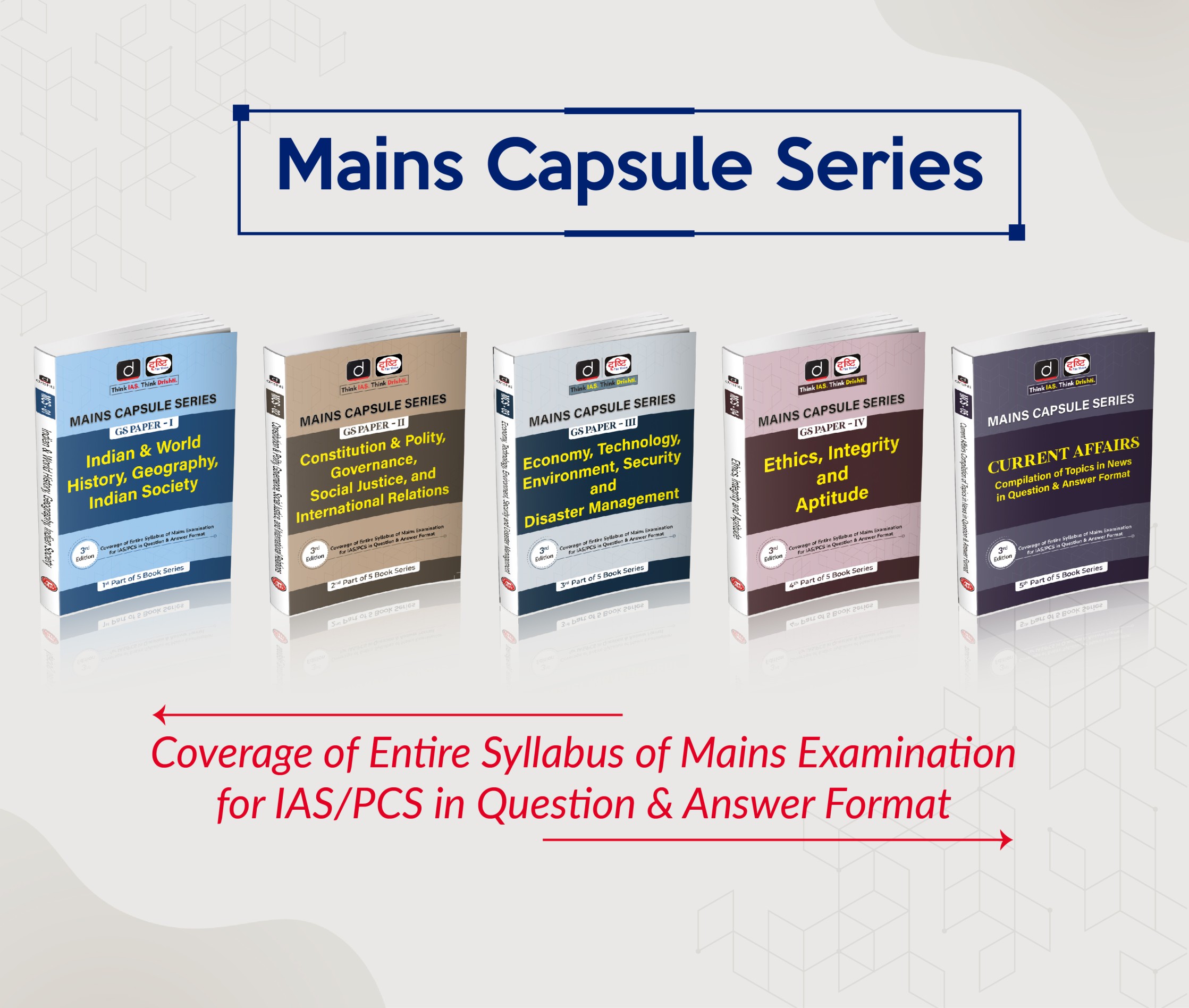
Important Facts For Prelims
International Day of Yoga 2023
Why in News?
The 9th International Day of Yoga (IDY) was celebrated on June 21st with various events and initiatives taking place across the country.
- This year's IDY theme, "Yoga for Vasudhaiva Kutumbakam," which highlights India's socio-cultural heritage and promotes unity.
What are the Key Highlights of IDY 2023?
- Promoting Tribal Artisans:
- Tribal Cooperative Marketing Development Federation of India Ltd (TRIFED) collaborated with the Ministry of Ayush to supply yoga mats exclusively made by tribal artisans.
- These mats represent the diverse cultural heritage of India's tribes, showcasing their stories, folklore, and artistic traditions.
- TRIFED will highlight products and communities such as Madur mats or Madhurkathi from Medinipur, Sabai Grass Yoga Mats from Mayurbhanj, and Gondha Grass mats from Jharkhand.
- Tribal Cooperative Marketing Development Federation of India Ltd (TRIFED) collaborated with the Ministry of Ayush to supply yoga mats exclusively made by tribal artisans.
- Ocean Ring of Yoga:
- Indian Navy and Merchant ships will organize yoga demonstrations at ports and vessels of friendly countries, fostering global participation.
- Yoga from the Arctic to Antarctica:
- Coordination between the Ministry of External Affairs (MEA) and the Ministry of Ayush to organize yoga events in countries along the Prime Meridian line and UN member countries.
- Yoga sessions to be held at Himadri in the Arctic and Bharati in Antarctica, showcasing yoga's reach to extreme regions.
- Yoga Bharatmala and Yoga Sagarmala:
- Indian armed forces, including Indo-Tibetan Border Police (ITBP), Border Security Force (BSF), and Border Roads Organization (BRO), will form a chain of yoga demonstrations.
- Yoga Sagarmala will feature yoga along the Indian coastline along with yoga demonstrations on the flight deck of INS Vikrant.
- Indian armed forces, including Indo-Tibetan Border Police (ITBP), Border Security Force (BSF), and Border Roads Organization (BRO), will form a chain of yoga demonstrations.
- National Level Initiatives:
- The Prime Minister will lead yoga at the United Nations Headquarters in New York, demonstrating a global commitment to yoga.
- The Ministry of Ayush encourages "Har Aangan Yoga" which means Yoga in the courtyard of every house, by enabling yoga observation at the village level.
What is Historical Background and Significance?
- Background:
- The idea of International Day of Yoga (IDY) was proposed by India during the opening of the 69th session of the United Nations General Assembly (UNGA), held in 2014.
- The UN proclaimed 21st June as IDY by passing a resolution in December 2014.
- The first Yoga Day celebrations in 2015 at Rajpath in New Delhi created two Guinness World Records.
- It was the world's largest yoga session with 35,985 people.
- 84 nationalities participated in it.
- The idea of International Day of Yoga (IDY) was proposed by India during the opening of the 69th session of the United Nations General Assembly (UNGA), held in 2014.
- Yoga and its Significance:
- Yoga is an ancient physical, mental and spiritual practice that originated in India.
- The word ‘yoga’ is derived from Sanskrit and means to join or to unite, symbolizing the union of body and consciousness.
- Today it is practiced in various forms around the world and continues to grow in popularity.
- Yoga plays an important role in the psycho-social care and rehabilitation of Covid-19 patients in quarantine and isolation.
- The World Health Organisation (WHO) has also asked its member states to practice Yoga and has included it in its Global Action Plan for physical activity 2018-30.
- Yoga is an ancient physical, mental and spiritual practice that originated in India.
What are the Related Initiatives?
- M-Yoga App:
- The Prime Minister announced the M-Yoga App which will help in achieving ‘One World One Health’.
- The app is a work of collaboration between the WHO and the Ministry of Ayush, Government of India.
- The Prime Minister announced the M-Yoga App which will help in achieving ‘One World One Health’.
- New Website for International Day of Yoga (IDY):
- This web portal provides all the updated and relevant information relating to International Day of Yoga.
- It has a social wall where all the social media interactive platforms are available for the visitors to keep track on the discussions and participate in them.
- The portal is also linked to important web pages such as Swachh Bharat, Make in India, etc.
- Yoga Recognized as a Sports Discipline:
- The Ministry of Youth Affairs and Sports, after reviewing categorization of various Sports disciplines, recognized Yoga as a sports discipline and placed it in the ‘Priority’ category in September 2015.
- Common Yoga Protocol:
- The Ministry of Ayush in its ‘Common Yoga Protocol’ has listed Yama, Niyama, Asana, etc. among popular yoga ‘sadhanas’.
- Vocational Education Courses in Yoga:
- The Beauty & Wellness Sector Skill Council (B&WSSC) has vocational education courses in Yoga for CBSE schools.
- B&WSSC is established as a non-profit organization under the aegis of National Skill Development Corporation, Ministry of Skill Development and Entrepreneurship.
- Various Skilling initiatives:
- Thousands of candidates have been trained as yoga instructors and trainers through various skilling initiatives like the Pradhan Mantri Kaushal Vikas Yojana (PMKVY).
- Fit India Movement:
- Yoga is also a part of the Fit India Movement.
- Fit India Movement is a nation-wide campaign that aims at encouraging people to include physical activities and sports in their everyday lives.


Important Facts For Prelims
Red Supergiant Star Betelgeuse
Why in News?
The bright red star Betelgeuse, known as 'Thiruvathirai' or 'Ardra' in Indian astronomy, captivates observers with its prominent position in the constellation Orion.
- Recent research conducted by Japanese and Swiss researchers has shed light on the star's pulsation patterns.
What is Betelgeuse's Pulsation?
- About Betelguese:
- Betelgeuse is a red supergiant star that is nearing the end of its life. It is the second-brightest star in the constellation of Orion, after Rigel.
- Scientists noticed that Betelgeuse was mysteriously dimming in late 2019 following a traumatic outburst caused by the star blowing off a large portion of its visible surface.
- Betelgeuse varies in brightness because of two main factors: changes in its surface temperature and changes in its size.
- As a red supergiant, Betelgeuse has a very unstable outer layer that is prone to convection and pulsation.
- Betelgeuse is a red supergiant star that is nearing the end of its life. It is the second-brightest star in the constellation of Orion, after Rigel.
- The Pulsating Mechanism:
- The pulsation of Betelgeuse refers to the periodic contraction and expansion of the star.
- Researchers have compared the observed pulsation of Betelgeuse to theoretical estimates, indicating that the star is in its late carbon-burning stage.
- Pulsation periods provide valuable insights into the star's radius, luminosity, and mass, affirming its current phase of core carbon-burning.
- Similar to a pot's lid lifting to release steam, red giant stars expand and contract due to heating and cooling of hydrogen in their outermost layers.
- The star's outermost envelope contains cooler neutral hydrogen, which absorbs heat from the interior, causing the star to expand.
- As the temperature rises, hydrogen becomes ionised and can absorb more heat, leading to a forceful expansion and ejection of the outermost shell.
- The cyclic nature of this process results in periodic dimming and brightening of the star, observable from a distance.
- The pulsation of Betelgeuse refers to the periodic contraction and expansion of the star.
- Stages of Evolution:
- Stars like Betelgeuse fuse hydrogen into helium during their initial stages, which helps maintain a balance between gravity and energy release.
- Massive stars like Betelgeuse run out of hydrogen fuel in a few crore years, when they switch to using helium to make carbon. Helium runs out in about 10 lakh years.
- As each stage progresses, the burning of elements becomes faster, with carbon burning in a few hundred years and silicon burning in about a day.
- Afterwards red giants briskly consume one by one the elements of the periodic table, until finally their core brims with iron.
- Once the core is rich in iron, the temperature and pressure within the star drop. With nothing to stop it, gravity compresses the core and turns it into a neutron star or a black hole.
- As each stage progresses, the burning of elements becomes faster, with carbon burning in a few hundred years and silicon burning in about a day.
- Betelgeuse's late-carbon stage signifies the terminal phase before the star's imminent collapse.
What is the Constellation Orion?
- Constellation:
- A constellation is an area on the celestial sphere in which a group of visible stars forms a perceived pattern or outline, typically representing an animal, mythological subject, or inanimate object.
- They are useful in assisting astronomers and navigators to locate certain stars
- Officially, there are 88 recognized constellations in the night sky. These constellations were defined and established by the International Astronomical Union (IAU).
- IAU was founded in 1919, headquartered in Paris, France.
- A constellation is an area on the celestial sphere in which a group of visible stars forms a perceived pattern or outline, typically representing an animal, mythological subject, or inanimate object.
- Constellation Orion:
- It is a prominent constellation that can be seen throughout the world.
- It is located on the celestial equator and is best visible in the evening sky from January to April in the Northern Hemisphere, and from November to February in the Southern Hemisphere.
- It is a prominent constellation that can be seen throughout the world.


Important Facts For Prelims
Jagannath Rath Yatra
Why in News?
The Jagannath Rath Yatra officially begins in Puri, Odisha. This year, the festival commenced on June 20, 2023 and will culminate on June 28, 2023.
What is Jagannath Rath Yatra?
- Jagannath Rath Yatra is an annual Hindu festival that celebrates the journey of Lord Jagannath, his elder brother Lord Balabhadra, and his younger sister Goddess Subhadra from their home temple in Puri, Odisha to their aunt’s temple in Gundicha, about three kilometres away.
- The legend behind the festival is that once, Goddess Subhadra expressed her desire to visit her aunt’s place in Gundicha.
- To fulfil her wish, Lord Jagannath and Lord Balabhadra decided to accompany her on a chariot ride. This event is commemorated every year by taking the deities on a similar journey.
- The festival dates back to at least the 12th century CE, when the Jagannath temple was built by King Anantavarman Chodaganga Deva. However, some sources suggest that the festival was already in practice since ancient times.
- The festival is also known as Festival of Chariots, as the deities are carried on three massive wooden chariots that are pulled by devotees with ropes.
- It begins on the second day of the bright fortnight of the month of Ashadha (June-July) and lasts for nine days.
- Features of the Chariots:
- The rupakar servitors are skilled craftsmen responsible for carving intricate figures of birds, animals, flowers, and guardian deities on the chariots.
Jagannath Puri Temple
- Jagannath Puri Temple is one of the most impressive monuments of the Indian State Odisha.
- This temple is known as the “White Pagoda” and is a part of Char Dham pilgrimages (Badrinath, Dwaraka, Puri, Rameswaram).
- It is a splendid example of Kalinga architecture, which is characterised by curvilinear towers, intricate carvings and ornate sculptures.
- The temple complex is surrounded by a high wall with four gates facing the four cardinal directions.
- The main temple consists of four structures: the vimana (sanctum), the jagamohana (assembly hall), the nata-mandira (festival hall) and the bhoga-mandapa (offering hall).
- Jagannath Puri temple is called ‘Yamanika Tirtha’ where, according to the Hindu beliefs, the power of ‘Yama’, the god of death has been nullified in Puri due to the presence of Lord Jagannath.
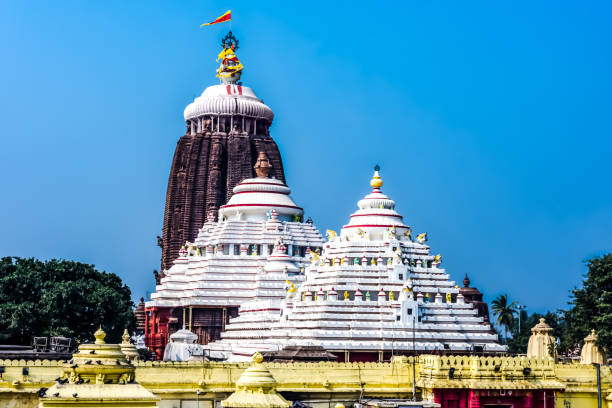 |
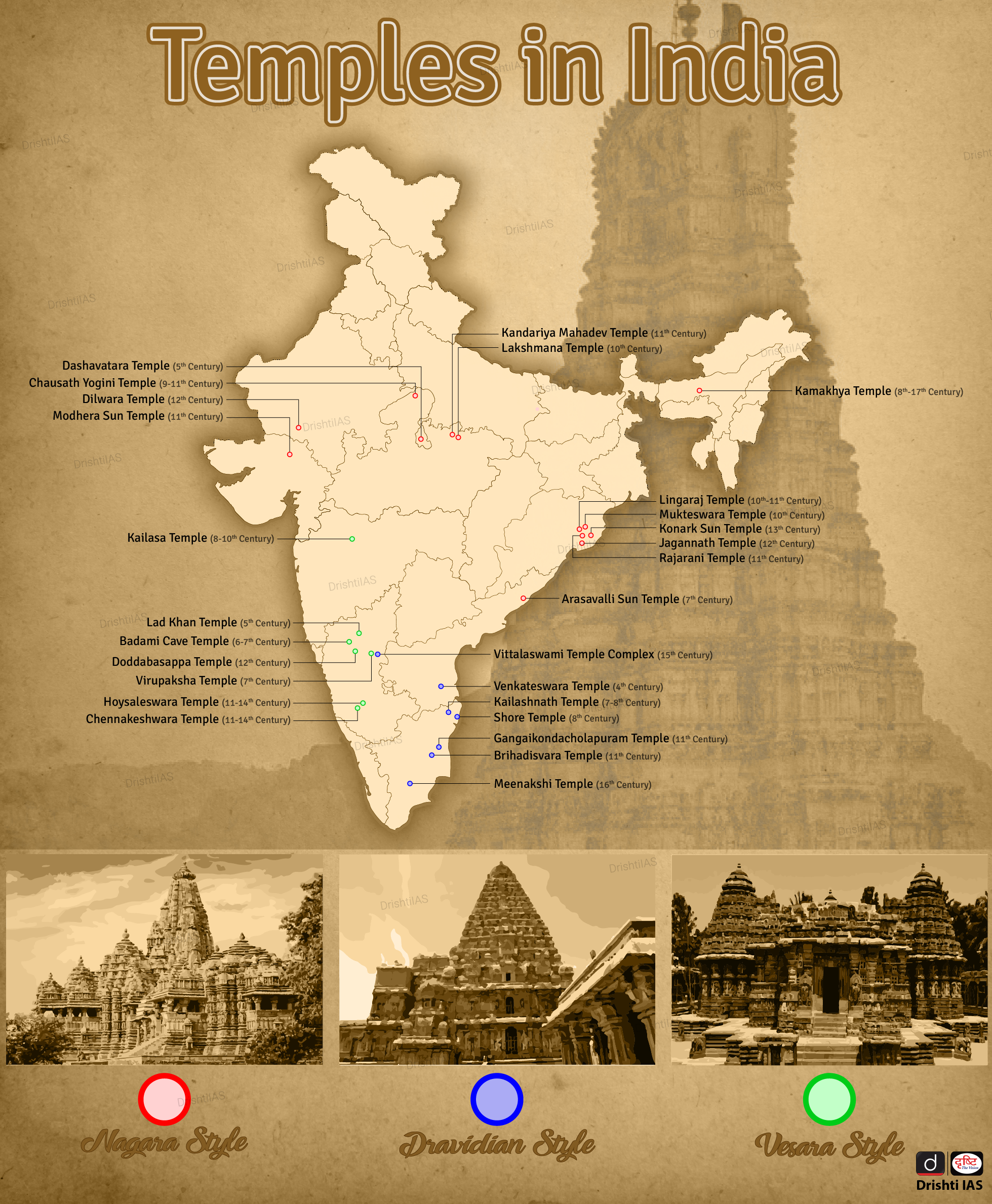 |


Important Facts For Prelims
Leptospirosis and Dengue Outbreaks
Why in News?
Leptospirosis is a potentially fatal bacterial disease that has become more prevalent during the monsoon months, posing a significant occupational hazard for those working in agricultural settings or in sanitary services that bring them into contact with contaminated water.
- Furthermore, public health experts are sounding the alarm about a potential severe dengue outbreak and emphasizing the need for enhanced clinical and virological surveillance. Changes in circulating dengue virus (DENV) serotypes could lead to more severe and life-threatening conditions.
- Thiruvananthapuram district, Kerala reported that 70% of dengue case samples in 2022 were DENV3, with some cases of DENV4.
What is Leptospirosis?
- About:
- Leptospirosis is caused by the bacterium Leptospira interrogans, which is primarily found in the urine of infected animals.
- Wild and domestic animals, including rodents, cattle, pigs, and dogs, serve as carriers of the disease.
- Symptoms:
- Leptospirosis can manifest with a range of symptoms, from a mild flu-like illness to life-threatening conditions.
- Common symptoms include sudden fever, chills, and headache, or sometimes no symptoms at all.
- Severe cases can lead to organ dysfunction, affecting the liver, kidneys, lungs, and the brain.
- Leptospirosis can manifest with a range of symptoms, from a mild flu-like illness to life-threatening conditions.
- Transmission:
- The transmission cycle begins with infected animals shedding leptospira in their urine.
- Individuals who come into direct contact with infected animal urine or indirectly through contaminated soil and water are at risk.
- People with cuts or abrasions on their skin have a higher likelihood of contracting leptospirosis.
- Individuals who come into direct contact with infected animal urine or indirectly through contaminated soil and water are at risk.
- The transmission cycle begins with infected animals shedding leptospira in their urine.
- Prevention:
- Preventing animal infection, Hygienic animal-keeping conditions, proper waste management, and improved sanitation facilities are essential to reduce the spread of leptospirosis and minimize economic losses for farmers.
- Adopting a 'One Health' approach, which considers the interconnectedness of human, animal, plant, and environmental health, is crucial in leptospirosis control.
- Misconceptions About Leptospirosis:
- One common misconception is associating leptospirosis solely with rats, which is not accurate as it can be transmitted by multiple animal reservoir hosts.
What is Dengue?
- About:
- Dengue is a mosquito-borne tropical disease caused by the dengue virus (Genus Flavivirus), transmitted by several species of mosquito within the genus Aedes, principally Aedes aegypti.
- This mosquito also transmits chikungunya and Zika infection.
- Dengue is a mosquito-borne tropical disease caused by the dengue virus (Genus Flavivirus), transmitted by several species of mosquito within the genus Aedes, principally Aedes aegypti.
- Serotypes of Dengue:
- There are 4 distinct, but closely related, serotypes (separate groups within a species of microorganisms that all share a similar characteristic) of the virus that cause dengue (DEN-1, DEN-2, DEN-3 and DEN-4).
- Symptoms:
- Sudden high fever, severe headaches, pain behind the eyes, severe bone, joint, and muscle pain, etc.
- Dengue Vaccine:
- Researchers at India’s National Centre for Biological Sciences, in collaboration with nine other institutions in India, Africa, and the US, have developed India’s first and only DNA vaccine candidate for dengue fever.
- The dengue vaccine CYD-TDV or Dengvaxia was approved by the US Food & Drug Administration in 2019, the first dengue vaccine to get the regulatory nod in the US.
- Dengvaxia is basically a live, attenuated dengue virus that has to be administered in people of ages 9 to 16 who have laboratory-confirmed previous dengue infection and who live in endemic areas.
- Challenges in Vaccine Development:
- Developing an effective dengue vaccine is challenging due to the four closely related virus serotypes, each interacting differently with antibodies. An ideal vaccine should target all serotypes while avoiding antibody-dependent enhancement (ADE), where antibodies can aid the virus, causing severe disease.
UPSC Civil Services Examination Previous Year Question (PYQ)
Prelims
Q. Which of the following diseases can be transmitted from one person to another through tattooing? (2013)
- Chikungunya
- Hepatitis B
- HIV-AIDS
Select the correct answer using the codes given below:
(a) 1 only
(b) 2 and 3 only
(c) 1 and 3 only
(d) 1, 2 and 3
Ans: (b)


Rapid Fire
Rapid Fire Current Affairs
NHAI's Knowledge Sharing Platform for Highway Development
National Highways Authority of India (NHAI) has launched a 'Knowledge Sharing' platform on its website to facilitate the exchange of knowledge and best practices in areas such as road design, construction, road safety, and environmental sustainability. The platform allows experts and citizens to share insights and upload video clips, PowerPoint presentations, and PDF files, which will be reviewed by NHAI officials for potential implementation.
This initiative aims to foster the holistic development of the National Highway infrastructure by encouraging the adoption of innovative practices and sustainable approaches, including the innovative use of recycled materials such as fly-ash and plastic waste. NHAI is also encouraging the use of Recycled Asphalt (RAP) and Recycled Aggregates (RA) in the National Highway construction to promote sustainable and eco-friendly practices.
With the integration of modern infrastructure elements like tunnels, bridges, wildlife corridors, and expressways, the platform seeks to engage a wider audience and promote collective efforts toward the nation's highway development goals.
Read more: National Highways Authority of India
World Sickle Cell Day 2023
Recently, World Sickle Cell Awareness Day, observed on 19th June, raises awareness about sickle cell disease (SCD) and its global impact.
The theme World Sickle Cell Awareness Day 2023 is ‘Building and strengthening global sickle cell communities, formalizing newborn screening and knowing your sickle cell disease status’. The theme is about recognizing the first step to understanding the genotype in infants and adults in fighting sickle cell disease. It also urges the utilization of advanced technology to identify SCD status.
SCD is a chronic single-gene disorder characterized by chronic anemia, acute painful episodes, organ infarction, and chronic organ damage, resulting in a significant reduction in life expectancy. Common symptoms include chronic anemia leading to fatigue, weakness, and paleness, as well as painful episodes known as sickle cell crises that cause intense pain in various parts of the body. Delayed growth and puberty can also occur.
Treatment options for SCD include blood transfusions to relieve anemia and reduce pain crises, the use of medication such as hydroxyurea to decrease the frequency of painful episodes and prevent long-term complications, and potentially bone marrow or stem cell transplantation.
Read more: Sickle Cell Disease
Indigenous mRNA-Based Omicron-Specific Booster Vaccine
The Department of Biotechnology (DBT) in India has achieved a significant milestone in the fight against Covid-19 with the approval of an indigenous Omicron-specific mRNA-based booster vaccine known as GEMCOVAC®-OM.
Developed by Gennova Biopharmaceuticals Ltd using an indigenous platform technology and supported by the Mission Covid Suraksha initiative implemented by the Biotechnology Industry Research Assistance Council (BIRAC), the vaccine has received Emergency Use Authorization (EUA) from the Drug Control General of India (DCGI).
GEMCOVAC®-OM stands out for its thermostability, eliminating the need for ultra-cold chain infrastructure required by other approved mRNA-based vaccines. This feature ensures easier deployment across India.
mRNA vaccines work by using mRNA, or messenger RNA, which is the molecule that essentially puts DNA instructions into action. Inside a cell, mRNA is used as a template to build a protein. These vaccines teach cells how to make a protein that triggers an immune response inside our bodies which then produces antibodies (what protects us from getting infected if the real virus enters our bodies).
Read more: mRNA-based vaccine, Drug Control General of India
'One Nation One Helpline' Initiative for Childline Services
The Ministry of Women and Child Development (MoW&CD) in India has undertaken a significant step by merging the successful Childline emergency counselling and distress helpline for children with the Emergency Response Support System (ERSS) number 112. The move aims to enhance the effectiveness and efficiency of child helpline services by integrating them with other emergency services such as the police, fire, and ambulance departments.
This decision is part of the 'One Nation One Helpline' initiative introduced by the MoW&CD. Initially, the merger will be implemented in nine states and UTs, including Andhra Pradesh, Arunachal Pradesh, Bihar, Gujarat, Goa, Mizoram, Ladakh, Puducherry, and Dadra and Nagar Haveli and Daman and Diu, with other regions to follow in a phased manner.
Previously, the Childline India Foundation (CIF) and its partner NGOs were responsible for operating the 24x7 helpline under the Child Protection Services scheme. However, the existing system lacked interoperability with other emergency services, resulting in delays during distress situations. Also, childline services were available in only 568 districts, leaving approximately 200 districts without coverage.
To automate and integrate the Childline 1098 service with ERSS 112, the Ministry has appointed the Centre for Development of Advanced Computing (C-DAC) based in Kerala as the "total solution provider." This integration will enable the classification of incoming 1098 calls into emergency, non-emergency, and information categories.
Read more: Emergency Response Support System, Childline India Foundation.





